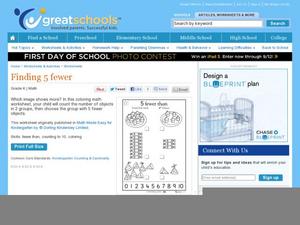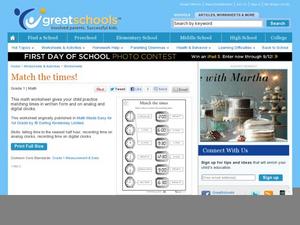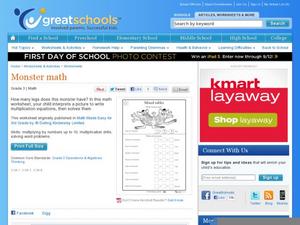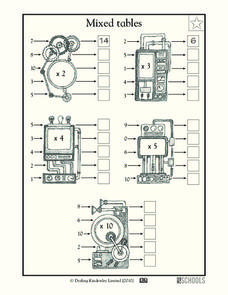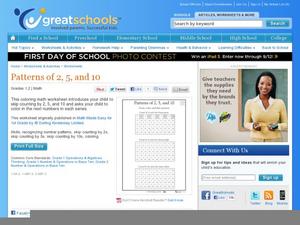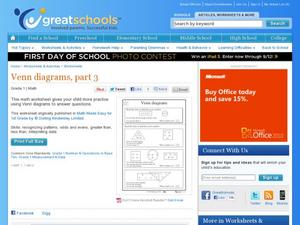Curated OER
Decimal Place Value
What is the place value of the digit 5? Explore decimals to the ten-thousandths place with these place value identification problems. For the first eight, pupils write down the place of a specific digit in various numbers. Next, scholars...
Curated OER
Expanded Form
Practice place value through writing numbers in expanded form; scholars do this with numbers up to five digits. There are two examples to demonstrate the process, and the problems are split into four distinct sections to keep pupils...
Curated OER
Expanded Form
Writing numbers in expanded form is a great way to practice place value, and here scholars do this with numbers up to six digits. There are two examples to demonstrate the process, and scholars complete four distinct sections to keep...
DK Publishing
5 Fewer Than
Before youngsters begin subtracting, give them this visual introduction focusing on the term fewer. They examine three pairs of party-themed object sets to determine which has five fewer than the other. After checking off the fewer...
Curated OER
Place Value
Each digit holds a specific value in numbers, and understanding place value is the key to this concept. Youngsters examine eight numbers and determine the value of four in each, writing it in both number and word form. Next, they circle...
Curated OER
Fractions
Represent fractions visually using shape models. Scholars color in two sets of shapes to represent specific fractions: 2/3 and 3/4. The shapes are segmented into equivalent fractions for most of these, so scholars need to understand this...
Curated OER
Problems Using Time
What time was it 20 minutes ago? Once your time-tellers have the basic skill down, take it up a notch with these word problems. Each one references a clock face, and scholars answer four questions for each of the three clocks (two analog...
Curated OER
The Same
Match up these silly monsters! There are six of them pictured, and young scholars match them to their identical twins. Encourage kids to explain why they made each match, focusing on specific attributes they noticed. Have them color the...
Curated OER
Match the Times
Get youngsters comfortable with telling time on both analog and digital clocks. They match times to the clock faces, all of which read a time on the hour or half-hour. The times are written out here (i.e. "half past nine" or "9...
DK Publishing
Monster Math - Mixed Tables
How many buttons would there be on six monsters? Multiplication beginners examine a strange-looking creature as they write eight number sentences. For each, they are determining how many of a particular feature would be on a specific...
Curated OER
Mixed Tables
Who knows how to operate these multiplication machines? Young mathematicians examine five machines, each with a specific function (i.e. x3) to transform the input numbers to output numbers. They send five numbers through each machine,...
Curated OER
Patterns of 2, 5, and 10
Give your young counters practice with skip counting and colors as they shade in number grids by 2s, 5s, and 10s. The three grids reach 50, and the first one is partially completed to give scholars an example. They follow directions by...
Curated OER
Simple Use of Parentheses #3
Do your mathematicians know how to use parentheses in equations? Give them a activity to hone their skills in order of operations. They work out 20 simple problems involving parentheses, then choose which problem out of six adds up to a...
Curated OER
Venn Diagrams, Part 3
Can your first graders interpret Venn diagrams? Different sets of clues help pupils narrow down a specific number in different shapes. They determine odds and evens, greater than or less than, and what shape the number is in. A fun...
Curated OER
Interrogative 1
There are specific words Spanish speakers use when asking questions. Can your beginning speakers identify which word completes the interrogative sentences provided? Choose between words like cuál, quién, qué, cómo, and cuándo. Quick and...
Curated OER
Tú eres el Líder
Start by having your class list words (specifically names, verbs, and adjectives) that would be necessary to know if you worked for the government. Then, using their lists, they create a story and/or write a speech that uses this...



